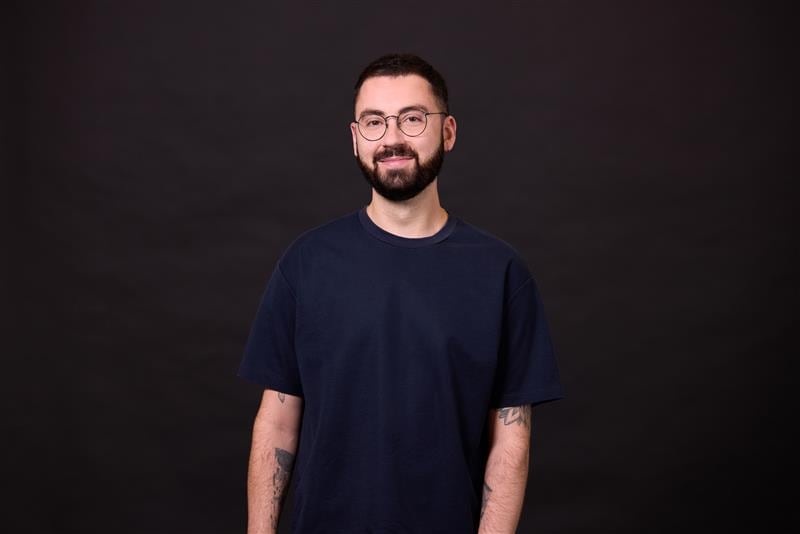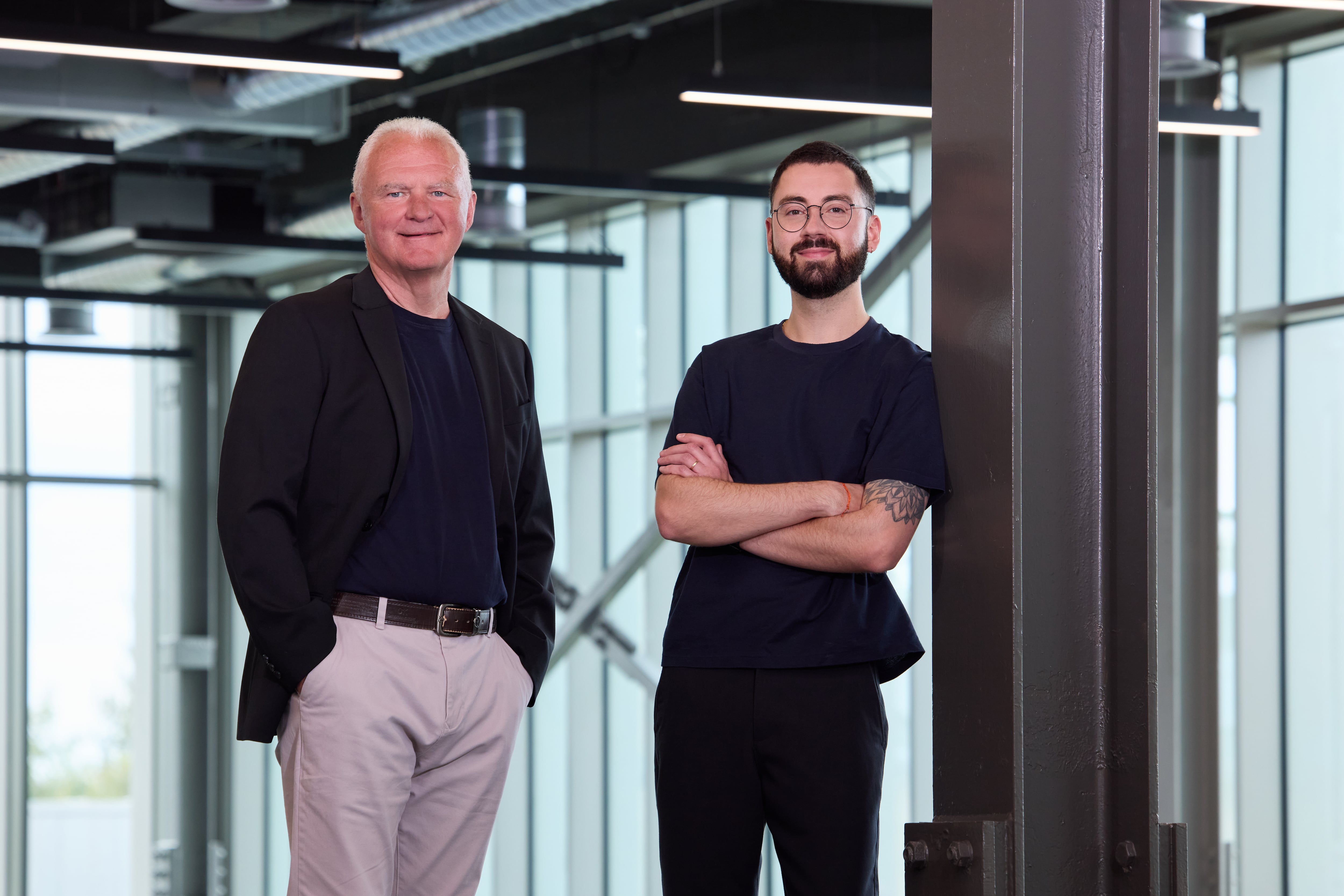CroBio is a British start-up founded by father and son duo, Wayne and Ross Mulhall, to help farmers protect crops against drought.
Using techniques Ross developed during his PhD, the company has developed a “living soil amendment” that sits around a plant’s root systems, enabling it to better capture water, fertiliser, and other inputs.
But while it has caught the attention of backers such as the UK government, its techniques take the genes of one bacterium and incorporate them into another, meaning it has run into difficulties with global regulators wary of genetic modification.
Ross explains how CroBio has evolved to meet the regulations, and how its product is helping farmers navigate a deteriorating climate.
ATN: What’s been the issue with regulators?
We had a great strategy for product development, but it’s been incredibly challenging to get it through regulations.
So about six months ago, we shifted our strategy and dived back into the regulatory definitions of what’s GM, what’s allowed to be released, and what’s classed as natural.
We’ve found a way we can produce a genetically similar microorganism we would have used traditional engineering techniques for, but because we’re using natural methods that are within the bacterial cells, the final product is classed as natural so avoids a lot of the regulations.
What sort of genetic material are you taking and where are you putting it?
Basically, in a bacterial cell that naturally produces cellulose in high quantity, we’ve taken the genes responsible for that and incorporated them into microbes that live around the root system.
It doesn’t use traditional recombinant techniques. We avoid that, because that’s part of the definitions. You also can’t edit a cell’s DNA outside of the cell. So we avoid doing that, and that therefore means we are not a GM microbe.
ATN: Has the new product been run past regulators yet?
Our main market to start was North America, because it’s one of the biggest agricultural markets. And also Brazil.
We faced quite a lot of back and forth with USDA [United States Department of Agriculture] and EPA [US Environmental Protection Agency] really trying to get an approval from them – but received it this month (March 2025).
We’ve also been given approval – or a non-regulated status – in the UK, Greece, Belgium, and Brazil over the past six months.
The regulations are challenging, but it depends on what you’re doing. The methodology we’ve done, a lot of the definitions are within the same scope. So between North America and Brazil, even most of Europe, the definitions for what we’re trying to achieve are similar.
What about the UK?
Because the UK left the EU, they don’t currently have a regulation on this type of biostimulant. So there’s a hole in the biostimulant law that they will be fixing, but it enables us to get released and then once you’ve got release, you’ve got ‘grandfather rights’ to maintain that product without any additional requirements.
ATN: Are you running any field trials with the new product?
We have fairly big field trials happening in Brazil on corn, sugarcane and cotton looking at drought resilience and how we shift the microbiome within the soil to capture chemical or biological inputs.
We also have trials arranged in the US, looking at corn. And then we have discussions at the moment in the UK on spring barley and potatoes, and also in Greece, on corn and cotton.
ATN: What stage are the trials at?
We’re aiming to be in the ground in Brazil by the end of the month. North America as well. We’re in the stage now of just formulating the product to stabilise it as a powder form, and then we’re shipping it off to the various countries for trials.
It’s pretty tight, but we have to move really fast to keep the company going.
ATN: How long will they take?
They’ll take about three months, and then we’ll review the data. The plan is to then fundraise $7 m in a Series A.
ATN: What for?
To commercialise the product. We need to have a product for the farmers to start using. We’ve talked to farmers in the UK, the US, Brazil, and a lot of them just want the product to test.
There seems to be a view that you need to test, test, test for years and years and yes, it’d be nice to have all that data. But at the end of the day, we’re a company so we need to make it commercial as fast as possible.
And drought is a massive problem that is getting worse and worse year on year. Farmers just want a solution.
ATN: There’s been some high-profile droughts all around the world lately. Are you sensing more farmers taking an interest?
Definitely, and a lot of interest from corporates as well. We noticed some of the big ag distributors or cooperatives have dedicated programmes now on drought and how they can try and implement technology to solve this or address it. It’s just getting worse and worse.
ATN: Does the product have a name?
Blue Shoots.
ATN: Can you quantify the effect it has? How much more drought can a plant take because of the use of Blue Shoots?
We haven’t got full data on that at the moment. In the trials we’ll be exposing the plants to drought conditions, both out in the fields and in polytunnels.
What we did see in greenhouse trials was a 200% increase in water retention to capture water in this spongelike material.
We also saw an increase in soil organic carbon. The biomaterial is essentially glucose molecules bonded together so over time, that breaks down into individual glucose which then can be utilised by bacteria as a sugar source, increasing the microbiome and the soil health.
Overall, there was an 0.14% increase in that carbon within the soil. If that carried on at the same rate, we could take a desert-like soil that has literally no carbon in it to a healthy topsoil in five to 10 years.

ATN: If this ticks so many boxes both financial and environmental, why aren’t more people doing it?
People in the past have used hydrogels as a physical amendment to the soils. And it’s proven really well. There’s loads of data out there to show that it increases soil health, increases water retention, plant health, and so on. The problem is that it’s not a scalable solution. We can’t all walk around with packs of hydrogel and get them into the soil and around the root system.
So there was a big disconnect between what the hydrogels could do and how we would scale that technology to benefits growers.
ATN: How did you connect the dots?
My background helped. When I was doing my PhD, I was working on antimicrobial surfaces, so trying to destroy bacterial biofilms in clinical settings where they’re harmful to humans.
At the time, I knew that the bacteria biofilm had a hydration capability which acted like an umbrella over the microbes to protect them from things like disinfectants, but also keep them moist and alive.
And so we took those genes and put them into soil microbes to develop it around the root system.
There was a competition partly funded by Syngenta, and they really wanted to find a solution to make irrigated water more efficient within agriculture. I connected the dots between the benefit of this biofilm, or this hydrogel, and its scalability within agriculture to address drought as a major problem.
ATN: Why do you think Defra [the UK’s agriculture department] put money into the company?
We tried for grants for a while as a GM company, which wasn’t successful because there was never any potential for commercialising or using the product in the UK.
When we shifted our focus, that’s when we were successful with Defra. There’s a big challenge of how we maintain the viability of the soil environment and they’re coming into it with knowledge from around the world that soil health is declining.
I think UK soils are not far off being like other areas of the world which are really arid and depleted in nutrients.
So they’re really trying to see how we can make soil more efficient and not rely on chemical inputs to support crop production, which, in effect, also damages the soil.
ATN: And it’s you and your dad at the helm. What’s that like?
It’s good actually. We get asked that a lot by investors as they’re always concerned that this kind of close relationship could be damaging to a company. I think one of the biggest things is having trust in the person you’re running the company with.
My dad is very business orientated. His background is quite interesting actually. When he was younger, he was an electrical engineer. He then did a lot of work in oil and gas so was supporting an industry that was actively polluting.
He then shifted into renewable energy so was working on wind farms for quite a while with Siemens and James Fisher. And now he’s helping lead CroBio to pull atmospherics carbon back into the soil. So really full cycle for him in a sense.




